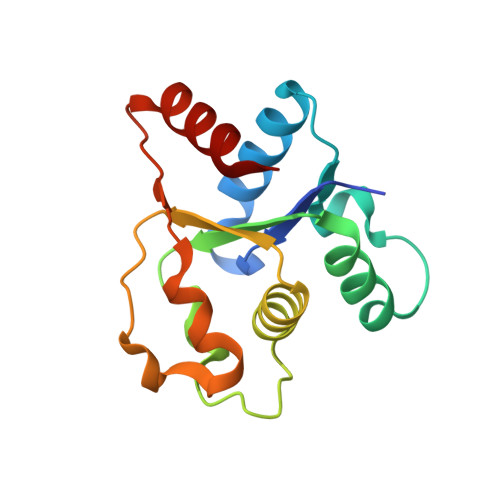Structural basis of SARM1 activation, substrate recognition, and inhibition by small molecules.
Shi, Y., Kerry, P.S., Nanson, J.D., Bosanac, T., Sasaki, Y., Krauss, R., Saikot, F.K., Adams, S.E., Mosaiab, T., Masic, V., Mao, X., Rose, F., Vasquez, E., Furrer, M., Cunnea, K., Brearley, A., Gu, W., Luo, Z., Brillault, L., Landsberg, M.J., DiAntonio, A., Kobe, B., Milbrandt, J., Hughes, R.O., Ve, T.(2022) Mol Cell 82: 1643
- PubMed: 35334231
- DOI: https://doi.org/10.1016/j.molcel.2022.03.007
- Primary Citation of Related Structures:
7NAG, 7NAH, 7NAI, 7NAJ, 7NAK, 7NAL - PubMed Abstract:
The NADase SARM1 (sterile alpha and TIR motif containing 1) is a key executioner of axon degeneration and a therapeutic target for several neurodegenerative conditions. We show that a potent SARM1 inhibitor undergoes base exchange with the nicotinamide moiety of nicotinamide adenine dinucleotide (NAD + ) to produce the bona fide inhibitor 1AD. We report structures of SARM1 in complex with 1AD, NAD + mimetics and the allosteric activator nicotinamide mononucleotide (NMN). NMN binding triggers reorientation of the armadillo repeat (ARM) domains, which disrupts ARM:TIR interactions and leads to formation of a two-stranded TIR domain assembly. The active site spans two molecules in these assemblies, explaining the requirement of TIR domain self-association for NADase activity and axon degeneration. Our results reveal the mechanisms of SARM1 activation and substrate binding, providing rational avenues for the design of new therapeutics targeting SARM1.
Organizational Affiliation:
Institute for Glycomics, Griffith University, Southport, QLD 4222, Australia.















